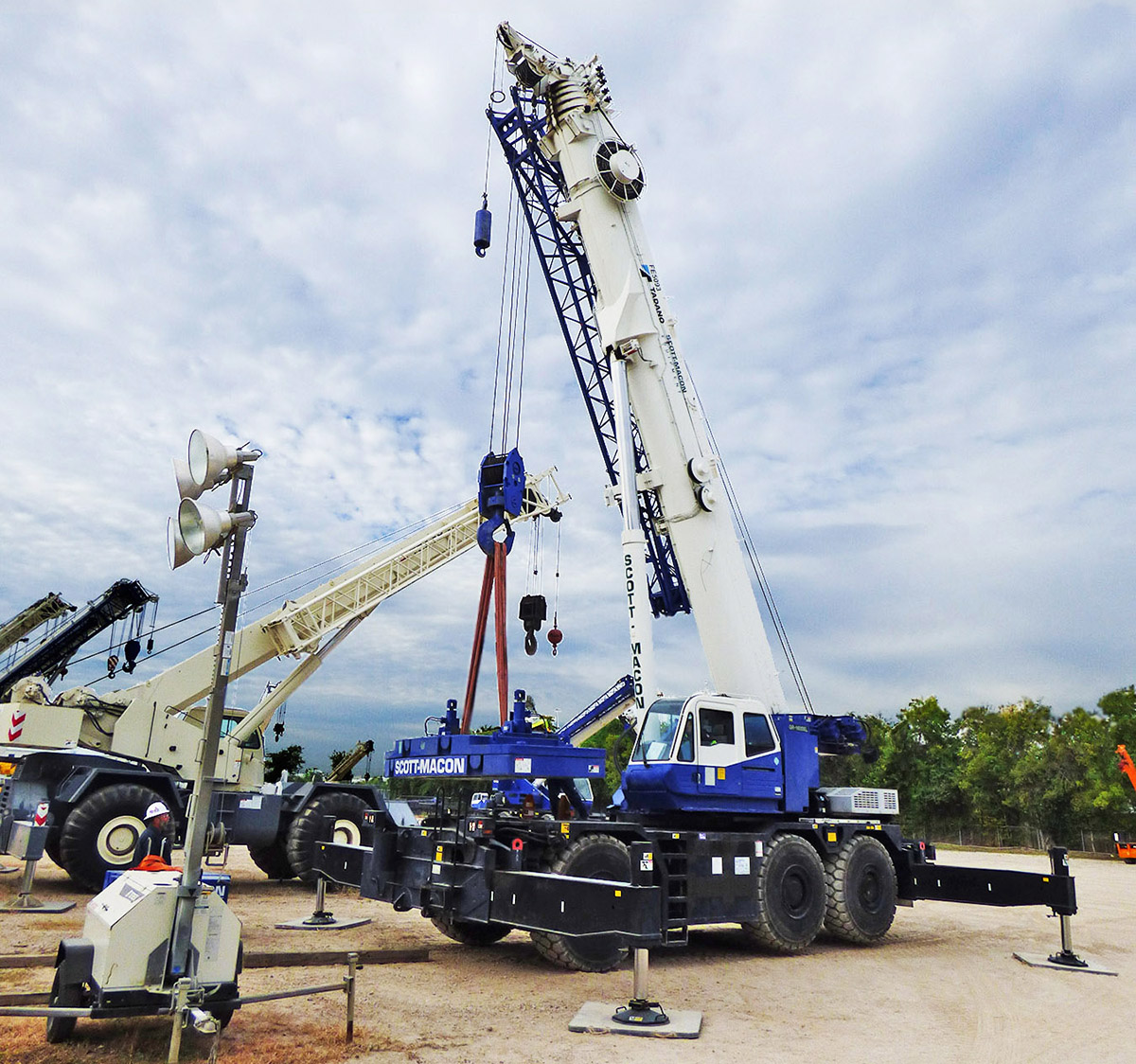When cranes are in action, crane safety should always be a high priority at the job site. Something that is always important to consider is how to stay safe when working around a crane -especially when it is moving a load.
Plan Ahead
A lift plan must be developed and reviewed before crane operations begin. The plan should outline load weights, rigging details, lift radius, ground conditions, communication methods, and personnel responsibilities. The crane operator and crew must follow the lift plan during all lifting activities.
Steer Clear of the Load
Loads being lifted by a crane can pose certain hazards. Consider the possible dangers for a moment. The load is being lifted by a mechanical device (the crane and its rigging), which is being operated by a human being. We know that both are subject to limitations and failures. Something could potentially go wrong despite the best of intentions. Loads can be large, heavy, difficult to rig, and may be subject to unexpected movements from wind or a load shift. The best way to avoid injury is to stay clear of the load. Even without a load, it is important to keep clear of the load block or auxiliary ball. Be sure to keep other personnel clear as well.
Barricades must be installed around the crane’s swing radius and lifting area during operation to prevent personnel from entering hazardous zones. Only authorized personnel are permitted within the barricaded area.
Stay aware of what is happening around you and above you. Look out for others, as they may not be as observant as they should be. Even the operator may not have considered the danger of moving a load over your head. If you see a load coming near, stay out of its potential fall zone. You and other authorized personnel should always stay out from under suspended loads!
Tag Line Safety
The use of tag lines can help keep you out of harm's way. You or other team members may have to
work near a suspended load in order to guide it into position. The tag line will put distance between yourself and the load in the event the load shifts or moves unexpectedly. Tag lines can help keep a load under control, but remember that your weight may be no match against a load that has started to swing or spin and has developed momentum. For a situation like this, you may have to allow the load to settle down in order to regain control.
When tending a tag line, you should always wear gloves to prevent rope burns. Do not loop the line around your hand, arm or body. This could cause you to be dragged along with the load and possibly put you in a bad situation.
Also, be sure if you are guiding a load with a tag line, check that your travel path is clear and safe before the load is suspended. You may be spending too much time watching the load instead of where you are going. It would be a shame to take precautions to avoid being caught by the load, only to be injured in a trip or fall.
Operator Tips to Avoid Injury
Proper crane training and adherence to established safety protocols is crucial for preventing accidents. Keeping everyone safe around the crane starts with being able to operate the crane safely. Knowing and abiding by safety protocols will help ensure that the job is being carried out in a safe manner at the job site.
The load’s movement and its route should always be considered prior to set up and operation. Every effort should be made to avoid having to lift the load over an occupied work area. If this cannot be done, the work under the load’s path should be temporarily halted and that area cleared while the pick is taking place.
When lifting a heavy load, proper communication is key. Be sure to maintain open and clear communication throughout the lift, ensuring everyone understands the procedures and any potential hazards. Using clear, standardized hand signals and two-way radios, along with pre-lift briefings, helps ensure all personnel understand the lift plan and remain safe.
Be prepared for emergencies and know the proper procedures for shutting down the crane and evacuating personnel if necessary. Also, it is a good idea to establish a system for reporting any near misses or incidents, so that lessons can be learned and accidents can be prevented in the future.
Conclusion
Staying safe should be at the forefront of everyone’s mind at the job site. This includes the operator as well as those working on the ground around the crane. Stay clear of the load and be alert when using tag lines. Remaining aware of the crane and its load at all times will help ensure a safe working environment.
For additional articles, click here: Blog | Scott-Macon Equipment (smequipment.com)












Comment